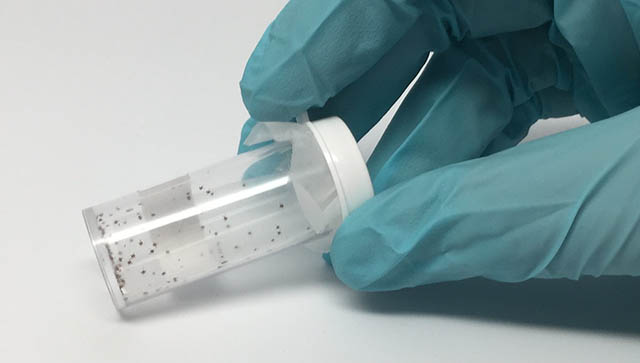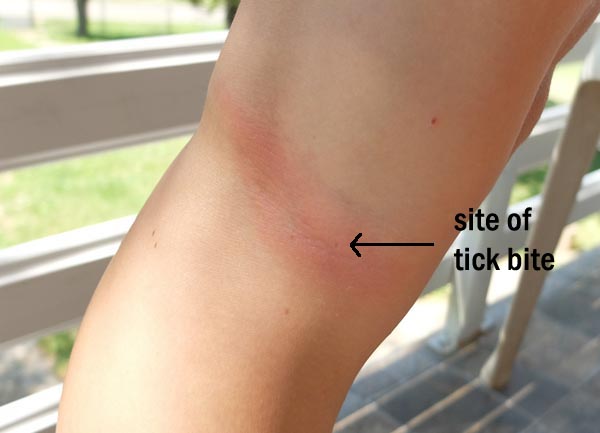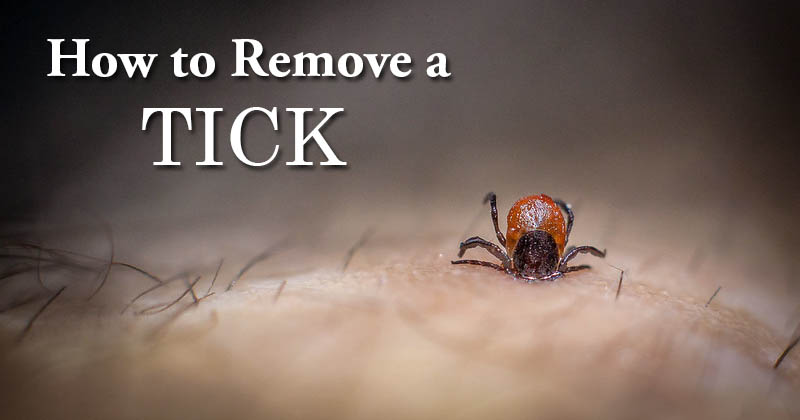I’ve had a lot of ticks bite me over the years. You’d think I’d be used to it by now, but it still grosses me out to find a tick embedded in my skin. However, I have gotten better at removing ticks over the years.
The way you remove the tick actually matters. Irritating a tick during removal increase your chances of getting Lyme disease. The wrong method might also cause the tick head getting stuck in your skin, which is an entire different level of grossness.
Here’s what you need to know to remove a tick properly, plus some tips to make it easier.
How to Remove a Tick Safely
1. Don’t Freak Out
It is very gross to find a tick attached to you, but resist the urge to immediately pull it off with your fingers. It’s often smarter to leave the tick attached until you can get a tool to remove the tick properly.
2. Use the Right Tool.
You should always use pointy tweezers or a V-tool when removing a tick. Do not remove a tick with your fingers. You could squeeze the tick, causing the tick’s stomach contents to regurgitate into your body, thus increasing the chances of disease transmission. It’s better to wait a bit to get a proper tool than immediately tear the tick out with your fingers.
Also read:

Larval and nymph ticks are so small that you’ll need finely-pointed tweezers.
3. Grab the Tick As Close to Its Mouth As Possible.
You want to grab the tick as low down as possible. This prevents you from squeezing the tick and causing it to regurgitate. It also makes it less likely for the tick’s head to snap off and get stuck in your skin. If that happens, don’t panic. Here’s what to do if a tick head is stuck in your skin.
Pro Tip: Gently pull the skin on each side of the tick apart. This makes it easier to grasp the tick close to its mouth.
4. Pull Straight Upwards
Using a gentle motion, pull the tick straight upwards. You don’t want to jerk the tick too hard or the tick head might break off in your skin. Do NOT twist the tick. Ticks do not have screw-shaped mouthparts and twisting does nothing to help get them out.
5. Check to See If Any Pieces of the Tick Remain
Carefully inspect the wound site to see if any parts of the tick remain in the wound.
6. Get Rid of the Tick
If you remove the tick properly, it should still be alive when you take it out. You should:
- Soak it in alcohol
- Seal it in a bag and throw it away
- Flush it down the toilet
If you are really concerned that the tick might contain Lyme disease pathogens, you can take it to your doctor for testing.
Never crush a live tick with your fingers as this could release pathogens. Admittedly, I have killed ticks with tweezers while on hikes, but make sure not to touch the dead tick and then disinfect the tweezers once I’m back in civilization.
7. Clean the Bite Area
Use alcohol, iodine or soap and water to clean the bite area.
8. Monitor for Symptoms of Disease
It is normal for the tick bite area to be bit red. However, it is not normal for the bite area to get red days or weeks afterwards. This could be a sign of Lyme disease. You’ll also want to be on the lookout for other symptoms of Lyme disease, such as fatigue and fever-like symptoms. See these photos of Lyme disease rashes.

Photo of early-stage Lyme disease rash, taken 17 days post tick bite.
How NOT to Remove a Tick
There are plenty of other ways to remove ticks, and some of them are easier than using tweezers. Yet, virtually all of these tick removal methods are NOT safe.
Anytime you irritate the tick when removing it, the tick can start to salivate. The saliva increases the likelihood that disease-causing pathogens will get into your blood and make you sick. Some methods may also cause the tick to burrow deeper into you, which will make it even harder to get out and increase the likelihood of getting sick.
I’ll go over some of these unsafe tick removal methods below.
Squeezing/Killing the Tick While It Is Still Attached
If you kill the tick by squeezing it while it is still attached, it can push the tick’s stomach contents into the wound. This increases the likelihood of disease transmission. It also might cause the tick head to get stuck in your skin.
Touching a Tick with a Hot Match
This tick removal method irritates the tick, causing it to detach and come out. While it does sometimes work, the tick is more likely to regurgitate saliva into you. The tick might also burst from the heat, which will almost certainly release any pathogens in the tick into your body.
Liquid Soap on a Cotton Ball
Another effective but unsafe tick removal method is to cover it with liquid soap (often put on a cotton ball first). This method suffocates the tick, theoretically causing it to exit your skin as it searches for air. It is unsafe because the irritated tick might regurgitate into your skin as it exits.
Vaseline
Covering a tick with Vaseline works in the same way as the liquid soap method: suffocation. Like with the soap method, it is unsafe because it irritates the tick and increases the chances of disease transmission.
Peppermint Oil
Applying peppermint or other essential oils to a tick can irritate it and cause it to come out on its own. But, like with other unsafe tick removal methods, it increases the chances that disease transmission could occur.
Hydrogen Peroxide, Gasoline, Alcohol or Nail Polish Remover
Like with other unsafe tick removal methods, applying chemicals like rubbing alcohol to a tick can cause it to throw up into the wound and increase the chances of disease transmission. On top of this, multiple studies show the methods aren’t even effective: some ticks will stay attached even after slathered in chemicals for 30+ minutes.
Twisting the Tick Off
One method for removing ticks that is often recommended is to twist it off. The idea is that you can unscrew the tick. Some popular tick removal tools (like O’Tom Tick Twister) are based on this idea. However, evidence shows that twisting is NOT a safe way to remove a tick.
Ticks do not have screw-shaped mouths, so twisting will not unscrew them. Some studies do show that a twisting motion can decrease the amount of force needed to remove a tick. However, more studies show that twisting increases the likelihood that the mouthparts will remain in the skin. Further, experts warn that twisting can cause a tick’s potentially infectious fluids to escape into the wound.
Image credits:
“What makes you tick” (CC BY 2.0) by mislav-m,
“Juvenile Deer Ticks” (CC BY 2.0) by NIAID
Resources:
https://www.lymedisease.org.au/wp-content/uploads/2017/09/Coleman-2804-14523-1-PB.pdf,
https://www.aafp.org/afp/2002/0815/p643.html,
https://pediatrics.aappublications.org/content/75/6/997.short,
static/file/Tick_removal.pdf,
https://www.lymedisease.org.au/wp-content/uploads/2017/09/Coleman-2804-14523-1-PB.pdf,
https://ohioline.osu.edu/factsheet/HYG-2073,
https://www.vdh.virginia.gov/content/uploads/sites/12/2016/02/TickBrochure.pdf,
http://coastalcpr.com/how-to-remove-a-tick/,
https://www.health.harvard.edu/blog/matchless-strategy-for-tick-removal-6-steps-to-avoid-tick-bites-201306076360,
https://www.politifact.com/factchecks/2019/jun/07/facebook-posts/no-liquid-soap-not-effective-way-remove-ticks-use-/<
static/file/hs_id_vzd_vt_if_you_have_a_tick_bite.pdf













Post your comments